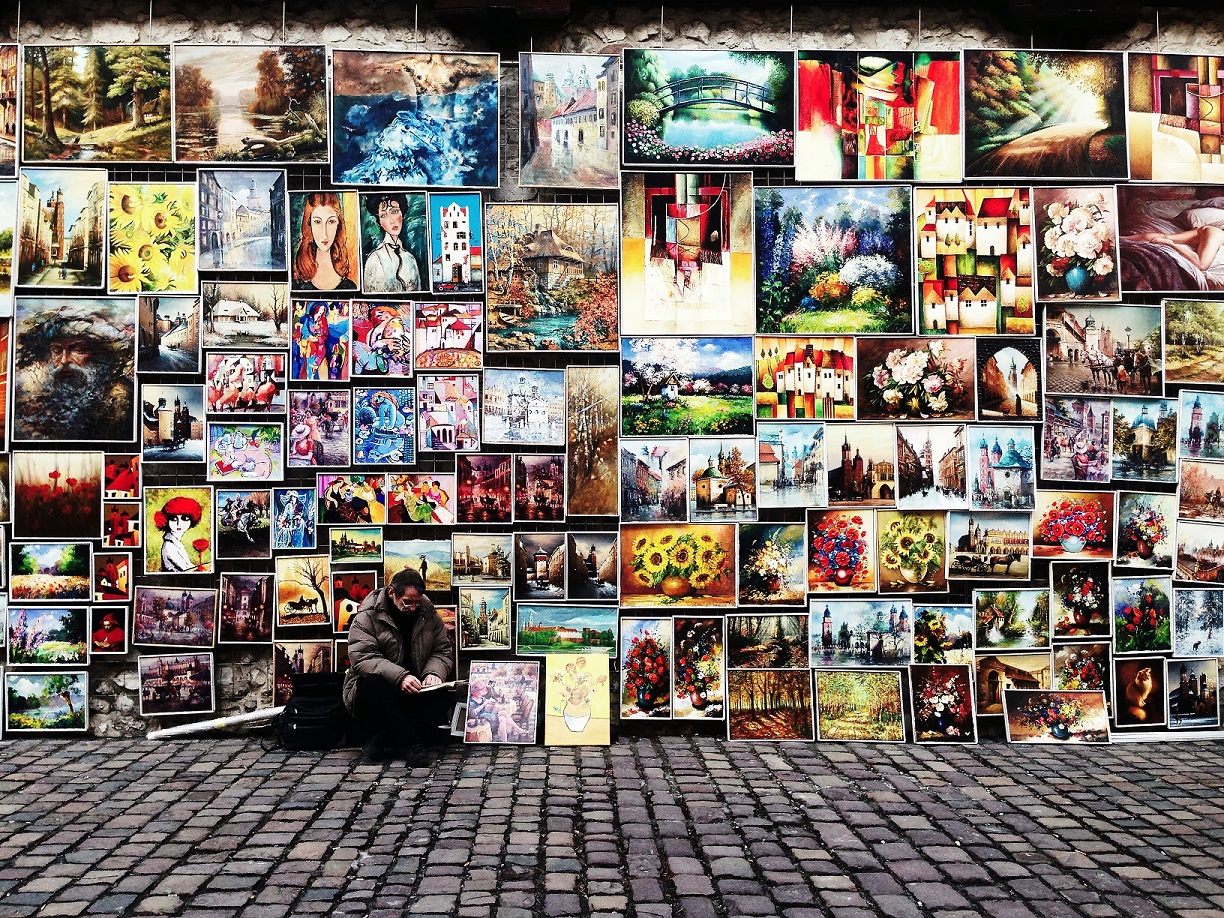
How the Cascadian Church can become an ecosystem for local artists.
June marked the biennial Christians in the Visual Arts conference, held at Azusa Pacific University. I had the chance to attend this year as an intern for the Fuller Institute for Theology and Northwest Culture. I wasn’t the only Cascadian to brave the dry, high temps of inland Los Angeles. Two Christian artists, Scott Kolbo and Matt Whitney, both teachers at Seattle Pacific University, joined me. I got to talk to them about their time at the conference and their take on how insights from CIVA can inform the relationship between the Church in Cascadia—a region known for its art—and local artists.
Building Ecosystems
Both Kolbo and Whitney are bi-vocational. They’re educators and artists. They’re not shy admitting that sustaining a full-time artist’s lifestyle in a place as expensive as Seattle is daunting, to put it mildly. One of the panels at the conference, featuring Christian installation artist Lynn Aldrich, addressed this. Aldrich spoke about finding support—financially, spiritually, and emotionally—through “building one’s own ecosystem” of connectedness. The artist’s desire to have their work seen, written about, and engaged is met when the artist seeks to create their own network around their work, rather than waiting for it to be discovered by curators, collectors, and the like.
Whitney says that the “process of building an ecosystem is a way of beginning the dialogue of art appreciation in Seattle. Gallery owners need to get people in the city to care about art. You want your ecosystem to cross pollinate with other ecosystems.” Creating an artistic network for yourself puts you in direct relationship with other people in your community.
How does building one’s own ecosystem as a visual artist—a fragile, tender place full of vulnerability and expectation—find a home in the Cascadian Church? Kolbo and Whitney take a similar stance. It’s the Church that needs to open its doors in new ways. Whitney says:
I’ve had mixed results with the Church as an artistic ecosystem. But if I find people within churches who care and are curious about art, then dialogue and relationship can occur. If the Church itself wants to be part of that, awesome. If they don’t, it’s to their detriment. We must protect ourselves as artists—we are fragile people. The Church breaks a lot of hearts. But part of those broken hearts was having false expectations for ourselves and the Church.
Kolbo adds, “The fact that art does not work in the Church is a symptom of bad theology, not bad art.”
What does it mean for art to “work” in a church setting? How does the Cascadian Church adjust its theology to be more receptive to the artist’s process and contemporary art movements? Those are huge questions without easy answers. The best responses I see are when the Church and artist come together and work out an answer in practice. Recently, Whitney has been working on artistic projects with Westminster Chapel in Bellevue, WA. He’s beginning to explore what it means to have a church support and invest in his art and process in the midst of creation. He responds to the congregation as he creates with and for them. In Seattle, the Fuller Institute for Theology and Northwest Culture is in its second year of a nine month residency program. The program places artists in local churches so that both can explore what the artistic process looks like in a church setting.
Artists as Pastors and the Church as Ecosystem
Those are important moves to make because the arts play a vital role in the spiritual life of the Church and the believer. Both Kolbo and Whitney suggest that when the Church fails to embrace art’s role in spiritual formation, artists will serve as the pastors and caretakers of culture outside the sanctuary walls. Kolbo believes that the current political/cultural atmosphere in the evangelical world is creating a lot of dissonance for young people. Many arts educators (specifically in Christian higher education) are having a hard time knowing how to help students with spiritual formation. This dissonance and confusion causes many young artists to drop away from a regular practice of their faith within the church. “Artists,” Kolbo says, “are going to do the work of taking care of the dissonant evangelicals that are coming down the pipeline.”
As a Christian, he wants to create a stable place for them. How? He’s inspired by social practice artists, who were highlighted at the conference. They’re “doing church and being a prophet for social justice in community.” They’re doing workshops for their congregations, open studios for interested people, street art, murals, and making art that gives identity and voice to often ignored groups of people.
As an art educator, Whitney immitates how a person of faith deals with contemporary art and cultural zeitgeist. He creates strong work that situates one’s practice within these ecosystems. When Christian students come to him and ask how to combine faith and art, he responds, “If God made you an artist, then the question you need to ask is how you can become a better artist.”
Kolbo and Whitney value the CIVA conference for its community and networking. It’s also a great space to wrestle with the seemingly unending question, “What do art and faith have to do with one another?” Kolbo believes that CIVA is trying to solve a theology problem as well as an art problem. But the problem is clear for artists in Cascadia. How do you make a living in such an expensive, individualistic culture? Kolbo and Whitney create ecosystems for themselves.
CIVA talks about how to make the Church a helpful partner in those ecosystems: artist-in-residencies within the Church, seeking to better engage the artistic movements of the city, and understanding the importance of visual communication about our culture and the artist as the author of that communication. The Church in Cascadia needs to bring together the important work of faith and the cultural calling of the artist.
In that regard, Whitney and Kolbo are models of faithful steadfastness in the midst of the challenges of being an artist. They believe that theology is a wide enough space to embrace all that artists are doing—for both the Christian artist and the non-Christian artist. It’s not just about selling the work they make. It’s about engaging in direct relationship with people around their work and the work of others. It’s about creating and participating in various ecosystems—like CIVA. That’s how they hope to inspire their students. That’s what they hope the Church can learn. The Church may never again be the main home for art, but it can be an ecosystem.
